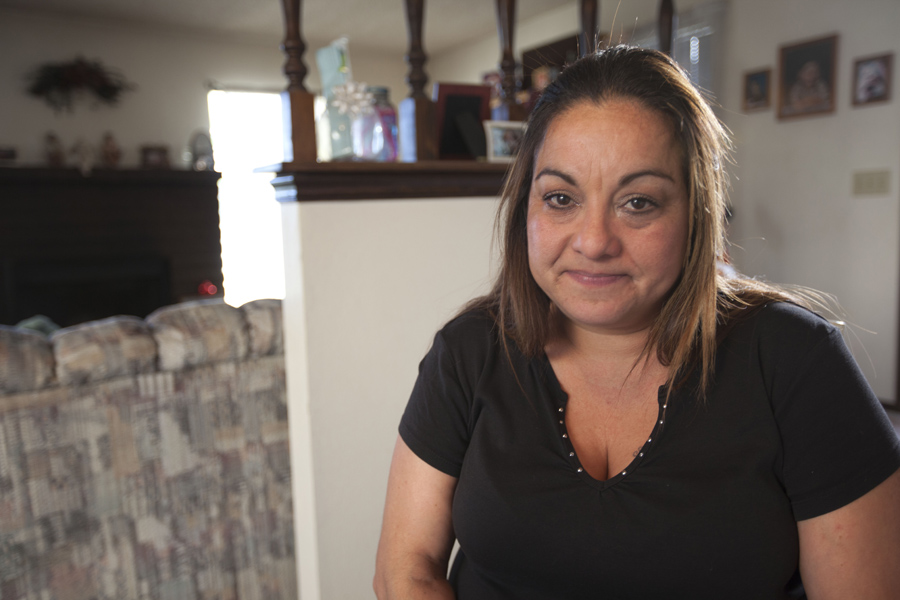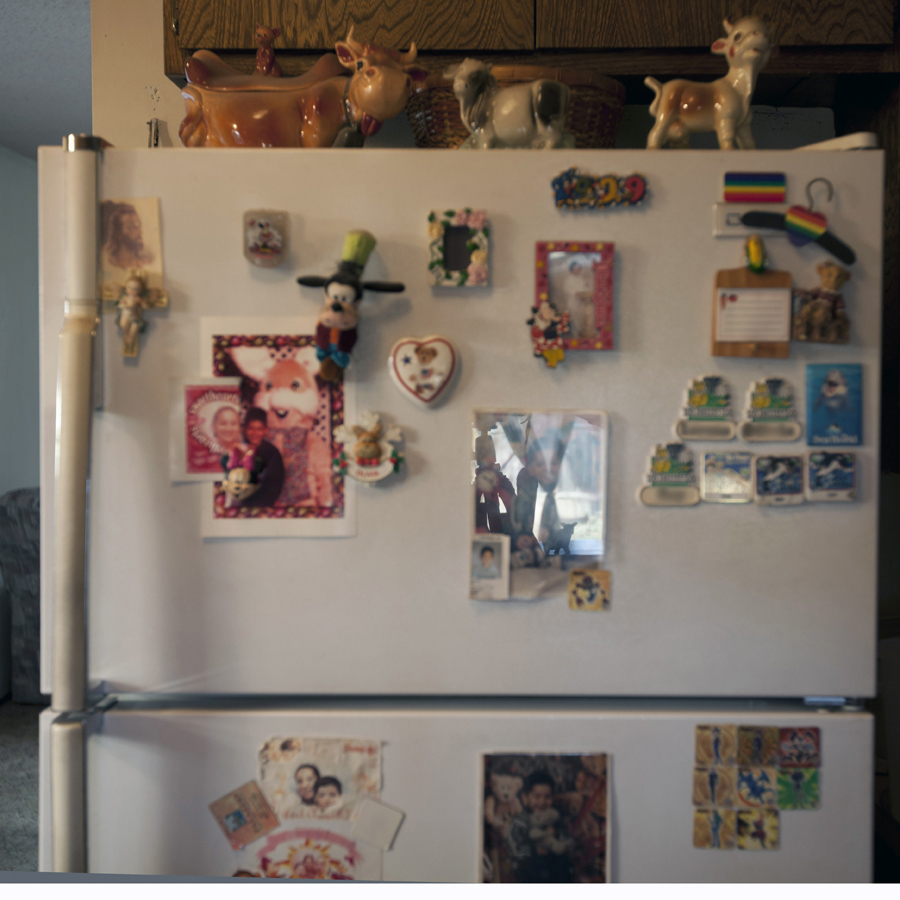An edited version of this text is featured on The Marshall Project
By Richard Ross
Just north of the city of San Francisco, across the bay at the tip of the Marin County, stands San Quentin, California Men’s Prison. The crenelated castle-like towers remind you it was built when Abraham Lincoln was still President. It is also the home to the only gas chamber and death row in the state with 550 condemned men.
It is also the work place of Mandi Camille Hauwert, the only transgender correctional officer on the staff.
Every work day, she walks into a hyper masculine world. In addition to the 4,000 male prisoners, many of the corrections officers are former military, forming their own band of brothers. As James Brown sang, “It’s a man’s man’s man’s man’s world.”
Hauwert had entered the correctional system after four years active in the Navy, deployed in the Pacific as a damage control and assessment officer. However, in early 2012, after seven years of working at San Quentin, Mandi ceased to hide her true feelings. She began to wear earrings and makeup and let her hair grow.
Mandi, 35, shows me her correctional academy graduation picture with her parents. It is not easy to recognize the broadly mustached officer as the blonde woman in front of me.
Six feet tall and solidly built, Mandi has been taking hormones for almost three years. She says they often make her emotional and teary. She’s especially emotionally as she recounts the number of times she is hurt by “gender misidentification” during her work day—when the guards and prisoners still refer to her as masculine instead of feminine. In fact, she has been sent home several times for crying, although it is nothing she can easily control.
An occasional misidentification of gender might be chalked up to preponderance of men in this world, but the body language of the world around her is often far from subtle. Two or three men, guards as well as inmates will stop a conversation, angle closer to each other and exchange words in a hushed tone as their eyes follow Mandi. Sometimes it is louder and more specific. The most insulting comments are from the inmates just coming into the system. Mandi says she’s heard comments like: “He’s just a fucking faggot with a fetish for women’s underwear.”
The people who do treat her with respect are usually those who get to know her better. “When the population knows me and knows who I am, they usually accept me more as a person,” Mandi says.
Still every day can be an endurance trial. “Being inside the prison everyday, it's tearing me apart,” Mandi says. “ It's erasing the sense of myself, my feelings of self worth.” She adds, “I believe it is partly the military mind-set which disallows flexibility when considering gender.”
In the prison with four cellblocks stacked five tiers high, the environment is pure masculine. Among the guards, who are primarily African-American, one of casual forms of address is “brother,” accompanied by clasped hands brought to the chest, an embrace and three solid pats on the back. But Mandi is not a brother. White, broad shouldered, she is nobody’s brother. While some people treat her with respect, others can be hurtful.
In the guards’ tan and black uniforms, gender is difficult to differentiate. Although her badge is the same, Mandi’s uniform is slightly different than those of her colleagues. She wears pants, but they are cut slightly differently than the men’s, and instead of a long black masculine tie, she wears a short, crossed ribbon. Her blouse also has pleats and buttons right over left rather than vice versa. Her long sandy blond hair is often tied up. She wears make up and has her nails done. Her voice with the inmates and peers is gentle and demure.
The ability of the institution to embrace her has been slower than she would like. She did receive formal notification about proper dress code and all the formal State of California notification as to her rights, but she was warned that “cross-dressing is not allowed.” Although the formalities hinted at what she might expect as a transgender, it is hard to translate that into a warm environment. If an individual worked, for instance, at the Berkeley campus of the University of California, which is just south of the prison, the transformation might be significantly easier--but this is California Men’s Prison.
There are three transgender inmates at the prison, Mandy notes. They are chromosomally male, and so they are housed at the men’s facility. Likewise those who are chromosomally women, even if they identify as male, are housed at the women’s prison.
Mandi’s work responsibilities are primarily patrolling the visiting room for inmates and visitors. Juan Haines, an inmate and managing editor of the San Quentin News, describes Mandi as one of the kinder officers in the system. He said, “Many of the guards feel that since you are in prison you are undeserving of kindness and love. They don’t realize that my job on visiting day is to be a father to my daughter. Mandi gets this and helps make visits positive.”
Mandi’s Facebook page reveals an open longing about what family means to her. She has been fortunate enough to be embraced by her mother and father, and Mandi herself openly laments her inability to have children. Transgender people are not allowed to adopt in California.
Her postings are a wealth of self-reflection—a complex narrative of the journey she has embraced since she came out to the prison staff. She is painfully candid and honest: “Each and every day I rediscover little parts of myself that have been long forgotten, or just never before accessed,” she wrote in one recent post. “I do not know, & I cannot say what the experience of growing up as oh girl is like, but what I can say with absolute clarity and certainty, is the experience of transitioning to womanhood later in life, is nothing short of mind blowing.
This transition is documented with an almost continual stream of selfies—mostly headshots of a shy but almost glamorous looking woman.
Mandi doesn’t write about any complaints against her work colleagues, as she fears more discrimination. “I have existed in a military or paramilitary world all my life,” she says. “I know how this works. And where would I start? I am misidentified by pronoun not once or twice a day but tens, hundreds of times a day—it’s endless and it’s crushing. It’s not worth it to me. It’s like Chinese water torture---one drop at a time, one pronoun at a time, one snide comment and aside---one after another. It’s torture.”
Still she knows that others have had it worse. Mandi herself attended the same junior high school in Oxnard where, in 2008, a 15-year-old gay student was shot twice and killed by another student. The assailant eventually pleaded guilty and received a sentence of 21 years.
Mandy’s “gender affirmation” surgery is scheduled for March. One advantage of her prison job is that the procedure is covered by her corrections officer insurance.
“I’m glad you are doing my story,” Mandi tells me. “I would hope the outcome would be to make life easier for other transgender people. Let's just say I'm not used to positive thinking and have not anything positive in my life in a long time. I have never really smiled much, but part of that also has to do this growing up depressed.”
She admits: “Yes, I am anxious” about the upcoming operation, as she sweeps a lock of her blond hair from across her face with her perfectly manicured nail tips--clear lacquer to comply with prison regulations. But she adds, “I will be home recouping with my family. My parents support me, and I am intensely close to my sister. My brother, who is a devout Christian, has disavowed me.”






 Last week, we brought you inside Santa Maria Juvenile Hall to meet
Last week, we brought you inside Santa Maria Juvenile Hall to meet 





